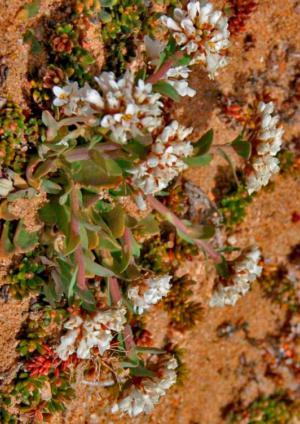Noccaea dacica
(Noccaea dacica)

Description
Noccaea dacica is a species of plant that belongs to the Brassicaceae family. It is native to the Balkans, specifically the Dinaric Alps, and is known for its ability to grow in harsh environments, such as on rocky terrain and in nutrient-poor soil. Description Noccaea dacica is a perennial herb that can grow up to 20 centimeters in height. Its leaves are arranged in a rosette and are typically grayish-green in color. The leaves are hairy and have a smooth texture. The flowers of Noccaea dacica are white or light pink in color and grow in clusters at the top of the stem. The fruit of the plant is a silique that contains small, round seeds. Distribution and Habitat Noccaea dacica is native to the Balkans, specifically the Dinaric Alps, which span across several countries, including Albania, Bosnia and Herzegovina, Croatia, Montenegro, Serbia, and Slovenia. It grows in rocky terrain, on limestone cliffs, and in nutrient-poor soil. Ecology Noccaea dacica is a pioneer species, which means that it is one of the first plants to colonize an area that has been disturbed, such as a recently abandoned mining site. It is able to grow in harsh environments due to its ability to tolerate heavy metals in the soil, such as lead, zinc, and cadmium. This makes it an important plant for phytoremediation, a process in which plants are used to remove pollutants from the soil. Uses Noccaea dacica has been traditionally used in Balkan folk medicine to treat a variety of ailments, including digestive issues and skin problems. Its leaves can also be used to make a tea that is said to have a calming effect. Conservation Noccaea dacica is listed as a species of least concern on the IUCN Red List. However, due to its limited distribution and the potential threat of habitat destruction, it is important to monitor populations of the plant and take conservation measures if necessary. Conclusion Noccaea dacica is a small but resilient plant that is able to grow in harsh environments and tolerate heavy metals in the soil. Its ability to colonize disturbed areas and remove pollutants from the soil make it an important plant for phytoremediation. Although it is not currently threatened, its limited distribution and potential for habitat destruction make it important to monitor populations of the plant and take conservation measures if necessary.
Taxonomic tree:







